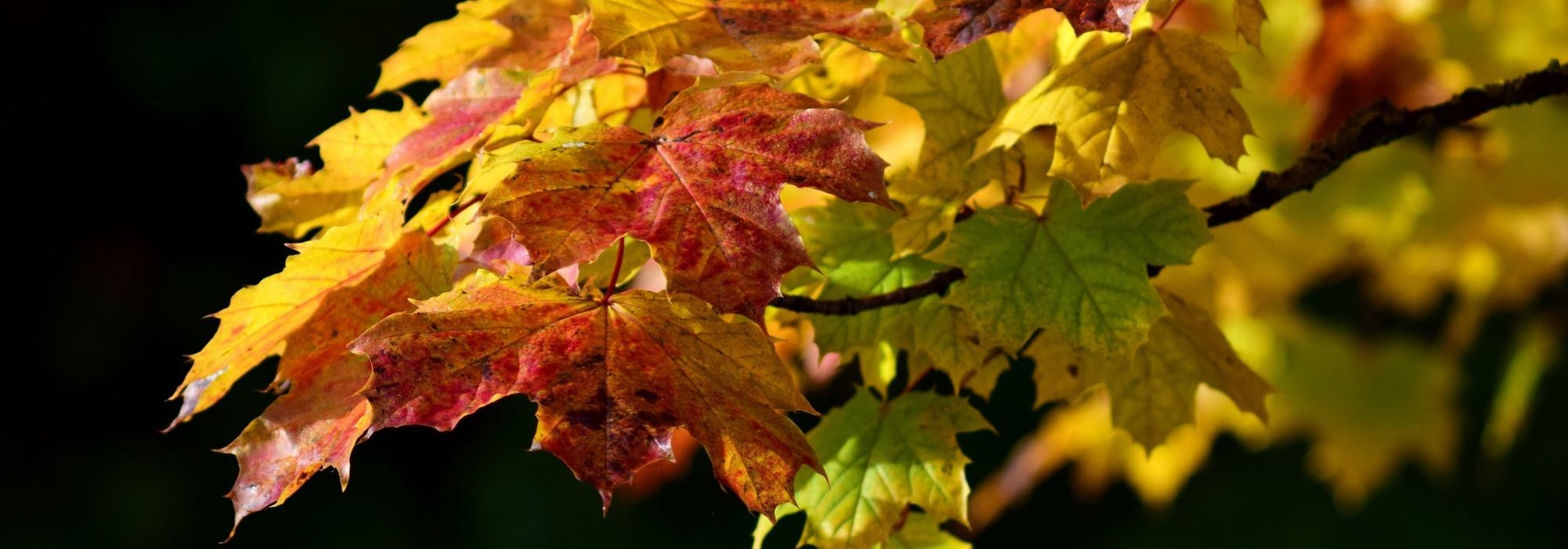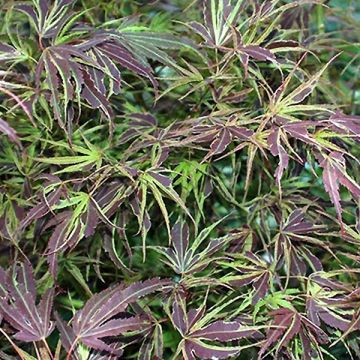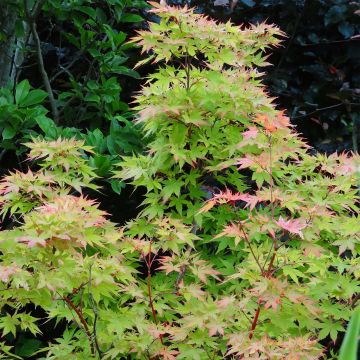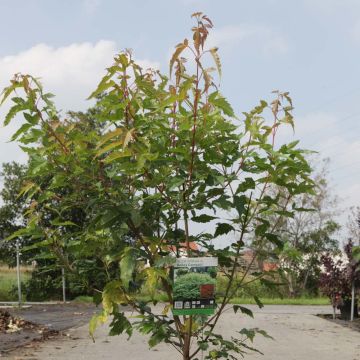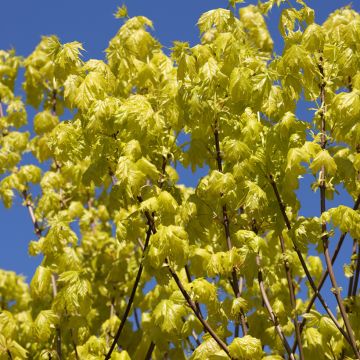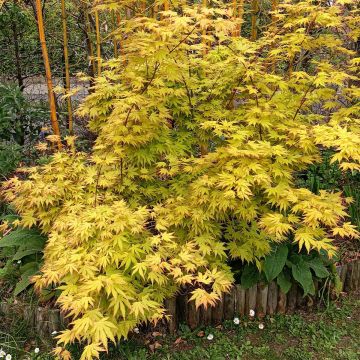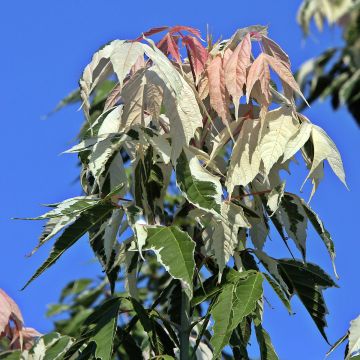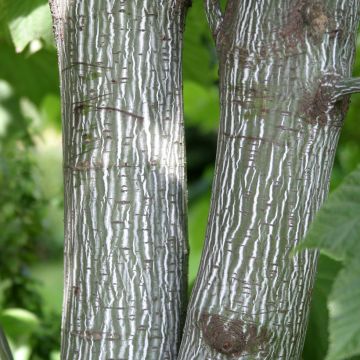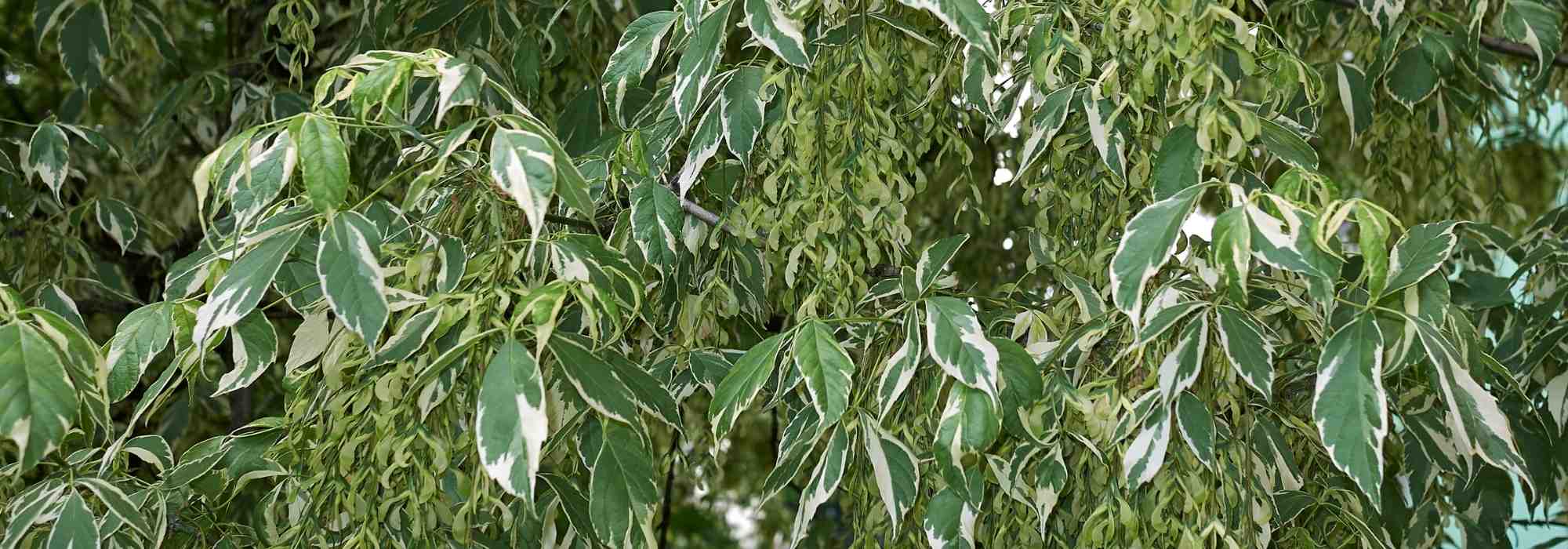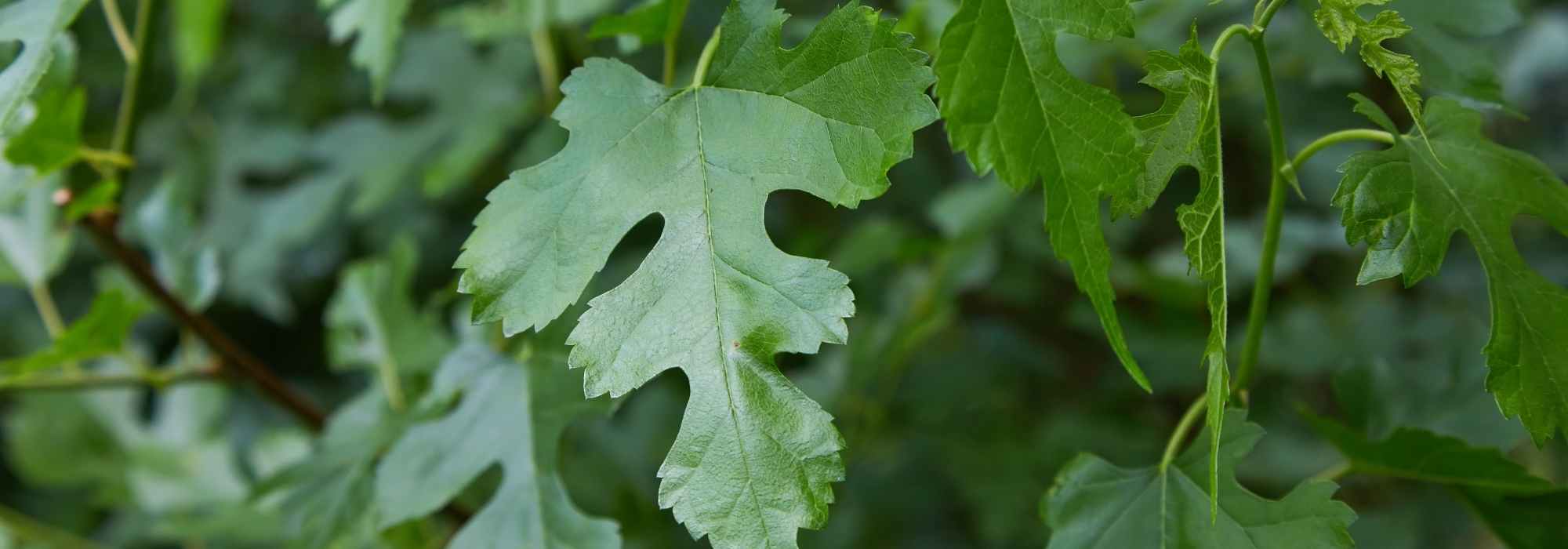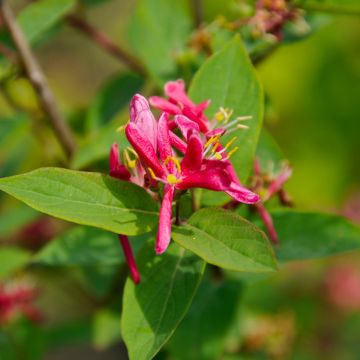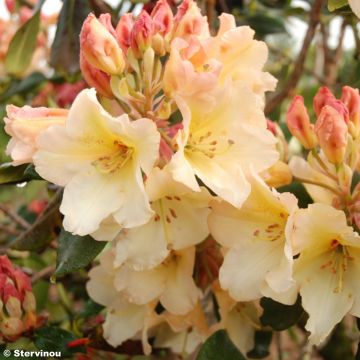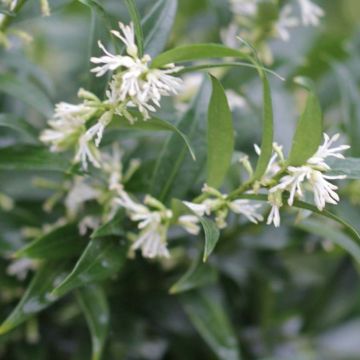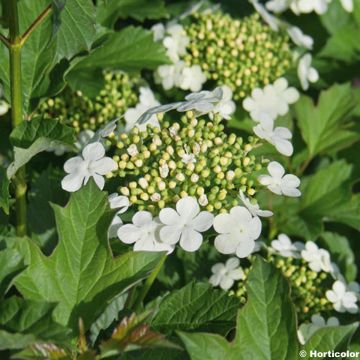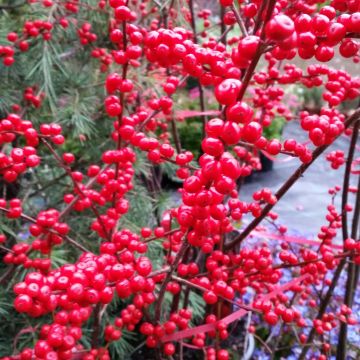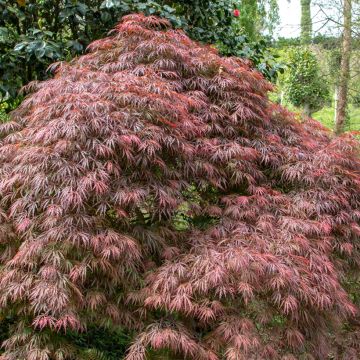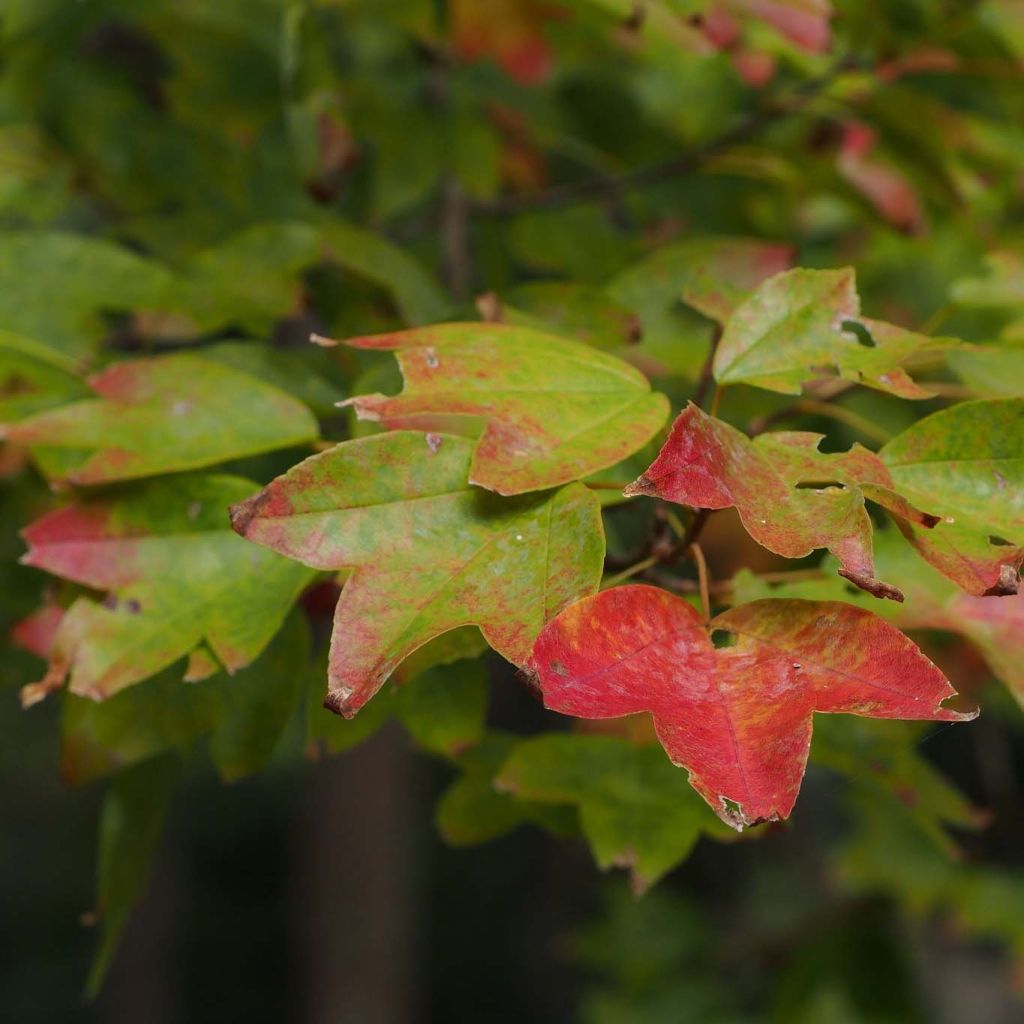

Acer buergerianum - Maple


Acer buergerianum - Maple
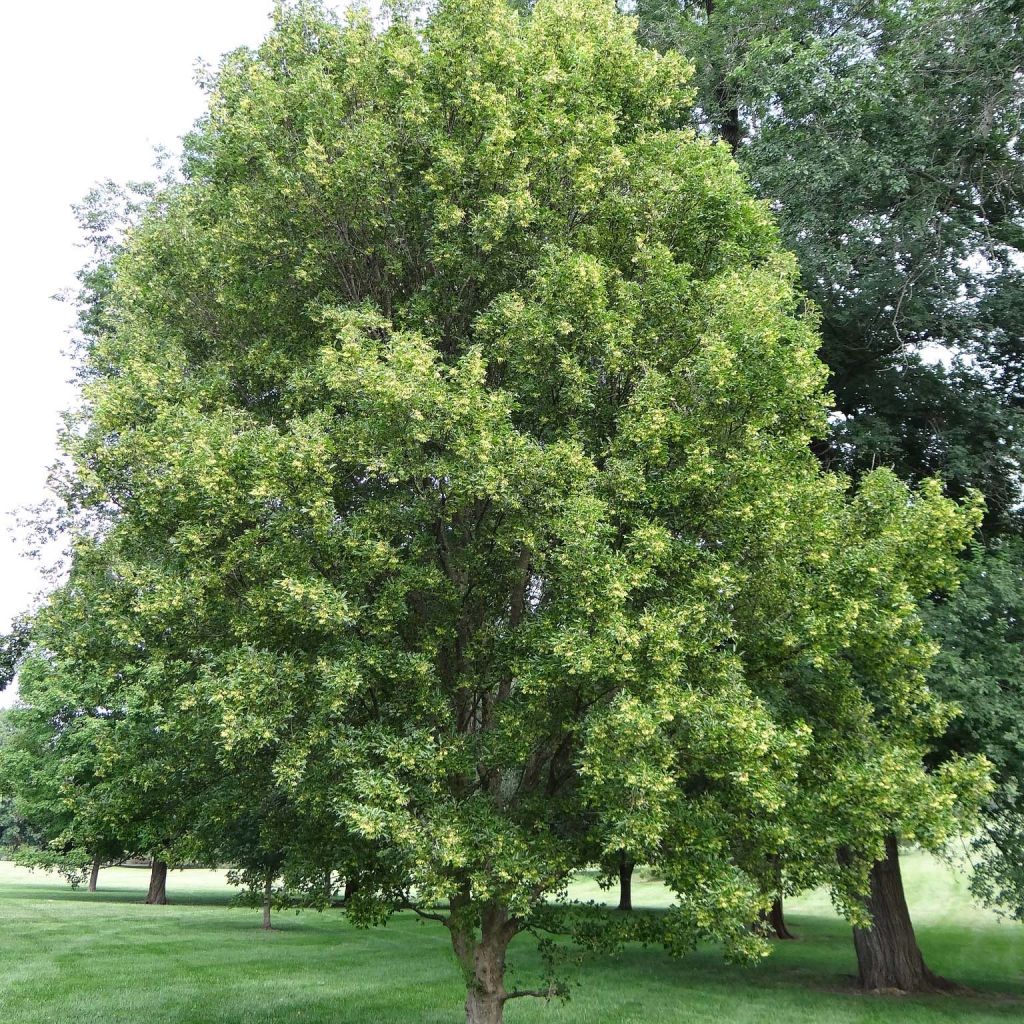

Acer buergerianum - Maple
Acer buergerianum - Maple
Acer buergerianum
Trident maple, Three-toothed maple
Special offer!
Receive a €20 voucher for any order over €90 (excluding delivery costs, credit notes, and plastic-free options)!
1- Add your favorite plants to your cart.
2- Once you have reached €90, confirm your order (you can even choose the delivery date!).
3- As soon as your order is shipped, you will receive an email containing your voucher code, valid for 3 months (90 days).
Your voucher is unique and can only be used once, for any order with a minimum value of €20, excluding delivery costs.
Can be combined with other current offers, non-divisible and non-refundable.
Home or relay delivery (depending on size and destination)
Schedule delivery date,
and select date in basket
This plant carries a 24 months recovery warranty
More information
We guarantee the quality of our plants for a full growing cycle, and will replace at our expense any plant that fails to recover under normal climatic and planting conditions.
Would this plant suit my garden?
Set up your Plantfit profile →
Description
Acer buergerianum, also known as Trident Maple, is a botanical species native to China.This beautiful slow-growing tree is extremely long-lived. It will eventually reach a height of about 10m (32.81°F). It is distinguished by its bright green trilobed foliage, which turns into a spectacular carmine red in autumn. Give it a prime location, not far from the house, to take full advantage its summer shade and beautiful foliage. It can also be incorporated into a loose hedge. Hardy down to -17°C (62.6°F), it thrives in full sun or partial shade in ordinary soil, preferably acidic and humus-rich. While a mature and well-established specimen can tolerate dry soil, it will not tolerate soil that is too chalky, heavy, or waterlogged. Buerger's Maple is very popular with bonsai enthusiasts.
Originating in the deciduous forests of eastern China, Acer buergerianum is a vigorous species that is resistant to cold and thrives in light woodland in humus-rich, non-calcareous soils that retain some moisture throughout the year. This small deciduous tree, belonging to the large family of Aceraceae, grows very slowly, reaching an average height of 10m (32.81 ft) with a spread of about 8m (26.25 ft) at maturity. Initially, it has a conical upright habit, which becomes more rounded with age. It has a rough, dark grey-brown bark with orange tones. Over time, the bark darkens and cracks. The deciduous leaves are carried on green-red petioles (stalks) up to 5cm (2 in) in length. They are divided into 3 pointed lobes and can measure up to 8cm (3.1 in) long and 6cm (2.4 in) wide. They are light green in spring, then dark green as they mature, before turning various shades of yellow, orange, and red in autumn before they fall. In April-May, corymbs of insignificant small yellow-green flowers appear. They are followed in August by fruits called samara.
The Trident Maple is a small tree that thrives in partial shade, non-calcareous, humus-rich, moist soils. If your garden can provide these conditions, it will become the centrepiece. This maple, witha moderate growth rate, will be at home in medium-sized gardens, either as a free-standing specimen or in the centre of an ericaceous bed surrounded by understated perennials such as hostas, ferns, or bleeding hearts. Choose its location carefully, preferably not too far from the house and visible from a window to fully enjoy its autumnal beauty and the coolness of its shade in summer.
Acer buergerianum - Maple in pictures
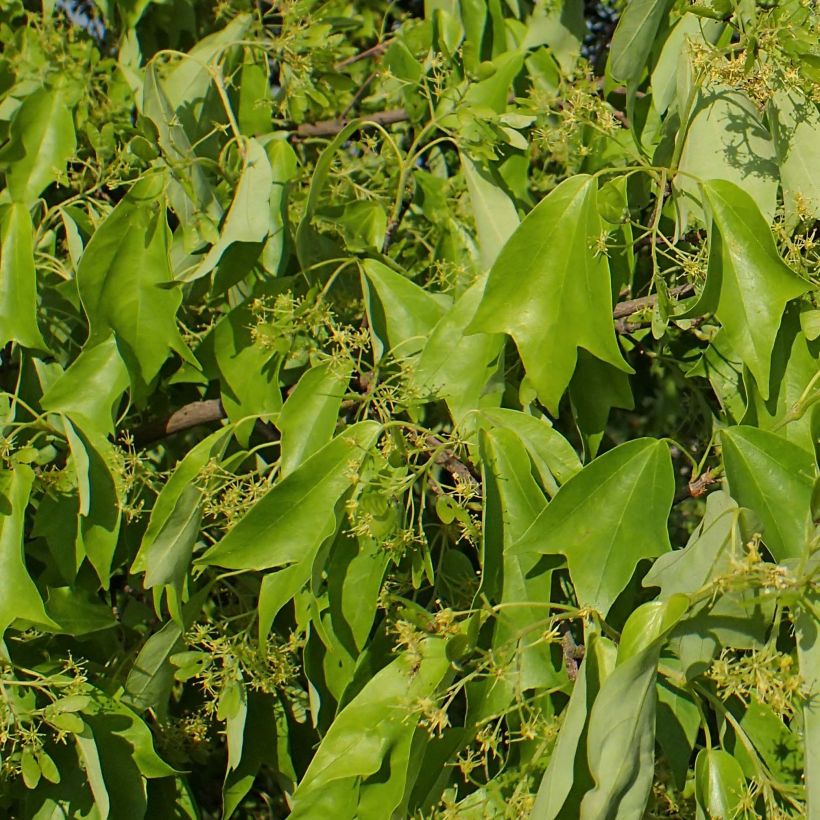

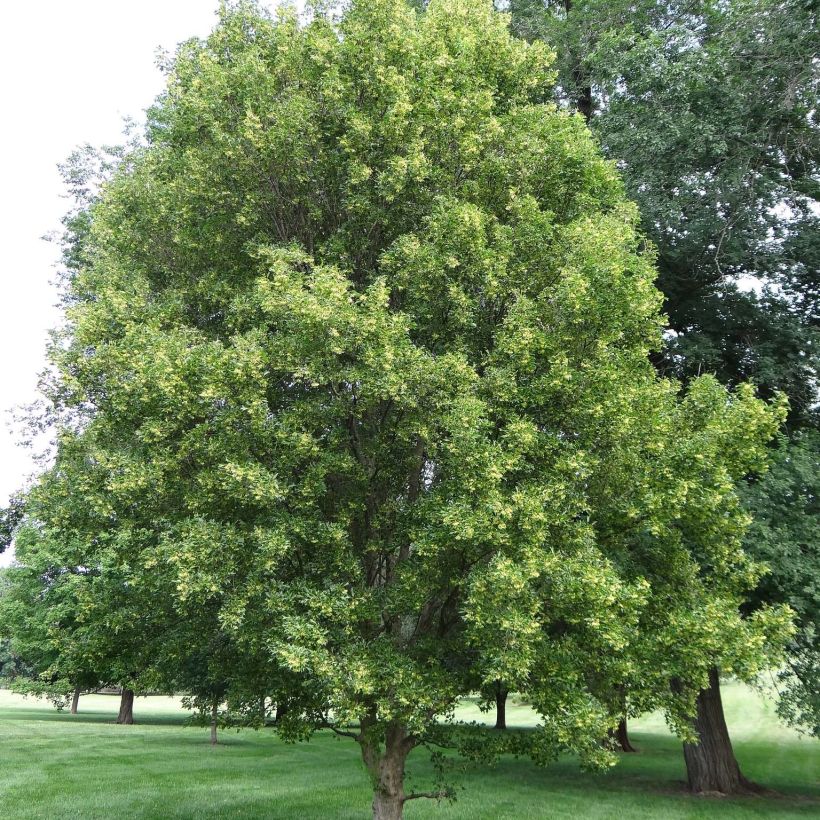

Plant habit
Flowering
Foliage
Botanical data
Acer
buergerianum
Aceraceae
Trident maple, Three-toothed maple
China
Other Acer - Maple tree
View all →Planting and care
The Acer buergerianum can be planted in spring or autumn in a fertile, well-drained, acidic to neutral, non-calcareous, deep, moist soil, rich in humus and in a gently sunny or preferably semi-shaded location. Avoid a position with exposure to the morning sun which could destroy the buds in the event of a frost at the end of winter. The soil needs to be moist throughout the year without being waterlogged. Beware of strong winds. Keep the soil moist during the first two summers after planting. Mulching can help to keep the soil moist. Formative pruning is necessary for young plants, and then prune every 3 years to balance the canopy; remove dead wood and maintain a harmonious shape. Do not prune after December as sap rises very early.
Planting period
Intended location
Care
Planting & care advice
This item has not been reviewed yet - be the first to leave a review about it.
Similar products
Haven't found what you were looking for?
Hardiness is the lowest winter temperature a plant can endure without suffering serious damage or even dying. However, hardiness is affected by location (a sheltered area, such as a patio), protection (winter cover) and soil type (hardiness is improved by well-drained soil).

Photo Sharing Terms & Conditions
In order to encourage gardeners to interact and share their experiences, Promesse de fleurs offers various media enabling content to be uploaded onto its Site - in particular via the ‘Photo sharing’ module.
The User agrees to refrain from:
- Posting any content that is illegal, prejudicial, insulting, racist, inciteful to hatred, revisionist, contrary to public decency, that infringes on privacy or on the privacy rights of third parties, in particular the publicity rights of persons and goods, intellectual property rights, or the right to privacy.
- Submitting content on behalf of a third party;
- Impersonate the identity of a third party and/or publish any personal information about a third party;
In general, the User undertakes to refrain from any unethical behaviour.
All Content (in particular text, comments, files, images, photos, videos, creative works, etc.), which may be subject to property or intellectual property rights, image or other private rights, shall remain the property of the User, subject to the limited rights granted by the terms of the licence granted by Promesse de fleurs as stated below. Users are at liberty to publish or not to publish such Content on the Site, notably via the ‘Photo Sharing’ facility, and accept that this Content shall be made public and freely accessible, notably on the Internet.
Users further acknowledge, undertake to have ,and guarantee that they hold all necessary rights and permissions to publish such material on the Site, in particular with regard to the legislation in force pertaining to any privacy, property, intellectual property, image, or contractual rights, or rights of any other nature. By publishing such Content on the Site, Users acknowledge accepting full liability as publishers of the Content within the meaning of the law, and grant Promesse de fleurs, free of charge, an inclusive, worldwide licence for the said Content for the entire duration of its publication, including all reproduction, representation, up/downloading, displaying, performing, transmission, and storage rights.
Users also grant permission for their name to be linked to the Content and accept that this link may not always be made available.
By engaging in posting material, Users consent to their Content becoming automatically accessible on the Internet, in particular on other sites and/or blogs and/or web pages of the Promesse de fleurs site, including in particular social pages and the Promesse de fleurs catalogue.
Users may secure the removal of entrusted content free of charge by issuing a simple request via our contact form.
The flowering period indicated on our website applies to countries and regions located in USDA zone 8 (France, the United Kingdom, Ireland, the Netherlands, etc.)
It will vary according to where you live:
- In zones 9 to 10 (Italy, Spain, Greece, etc.), flowering will occur about 2 to 4 weeks earlier.
- In zones 6 to 7 (Germany, Poland, Slovenia, and lower mountainous regions), flowering will be delayed by 2 to 3 weeks.
- In zone 5 (Central Europe, Scandinavia), blooming will be delayed by 3 to 5 weeks.
In temperate climates, pruning of spring-flowering shrubs (forsythia, spireas, etc.) should be done just after flowering.
Pruning of summer-flowering shrubs (Indian Lilac, Perovskia, etc.) can be done in winter or spring.
In cold regions as well as with frost-sensitive plants, avoid pruning too early when severe frosts may still occur.
The planting period indicated on our website applies to countries and regions located in USDA zone 8 (France, United Kingdom, Ireland, Netherlands).
It will vary according to where you live:
- In Mediterranean zones (Marseille, Madrid, Milan, etc.), autumn and winter are the best planting periods.
- In continental zones (Strasbourg, Munich, Vienna, etc.), delay planting by 2 to 3 weeks in spring and bring it forward by 2 to 4 weeks in autumn.
- In mountainous regions (the Alps, Pyrenees, Carpathians, etc.), it is best to plant in late spring (May-June) or late summer (August-September).
The harvesting period indicated on our website applies to countries and regions in USDA zone 8 (France, England, Ireland, the Netherlands).
In colder areas (Scandinavia, Poland, Austria...) fruit and vegetable harvests are likely to be delayed by 3-4 weeks.
In warmer areas (Italy, Spain, Greece, etc.), harvesting will probably take place earlier, depending on weather conditions.
The sowing periods indicated on our website apply to countries and regions within USDA Zone 8 (France, UK, Ireland, Netherlands).
In colder areas (Scandinavia, Poland, Austria...), delay any outdoor sowing by 3-4 weeks, or sow under glass.
In warmer climes (Italy, Spain, Greece, etc.), bring outdoor sowing forward by a few weeks.






























